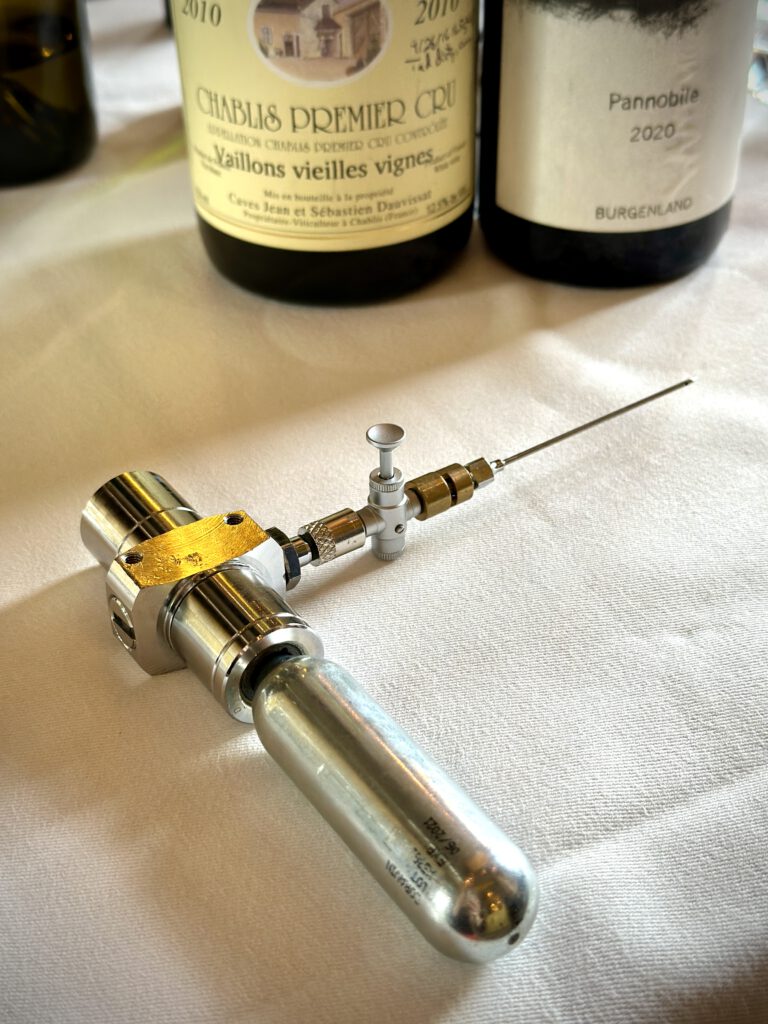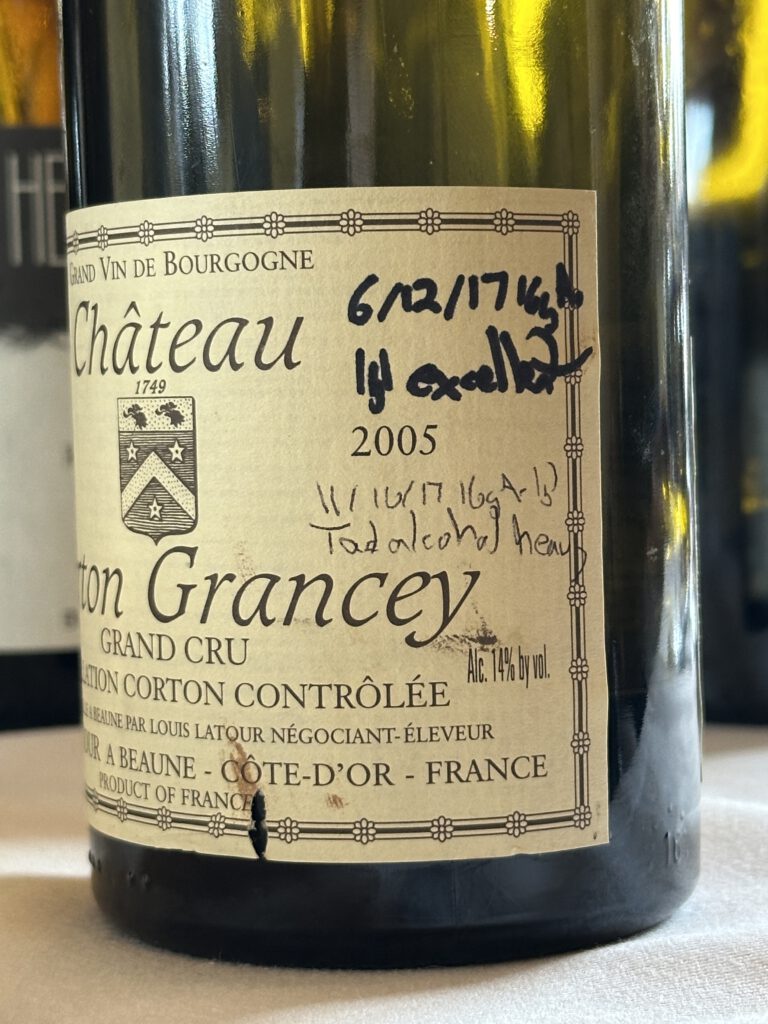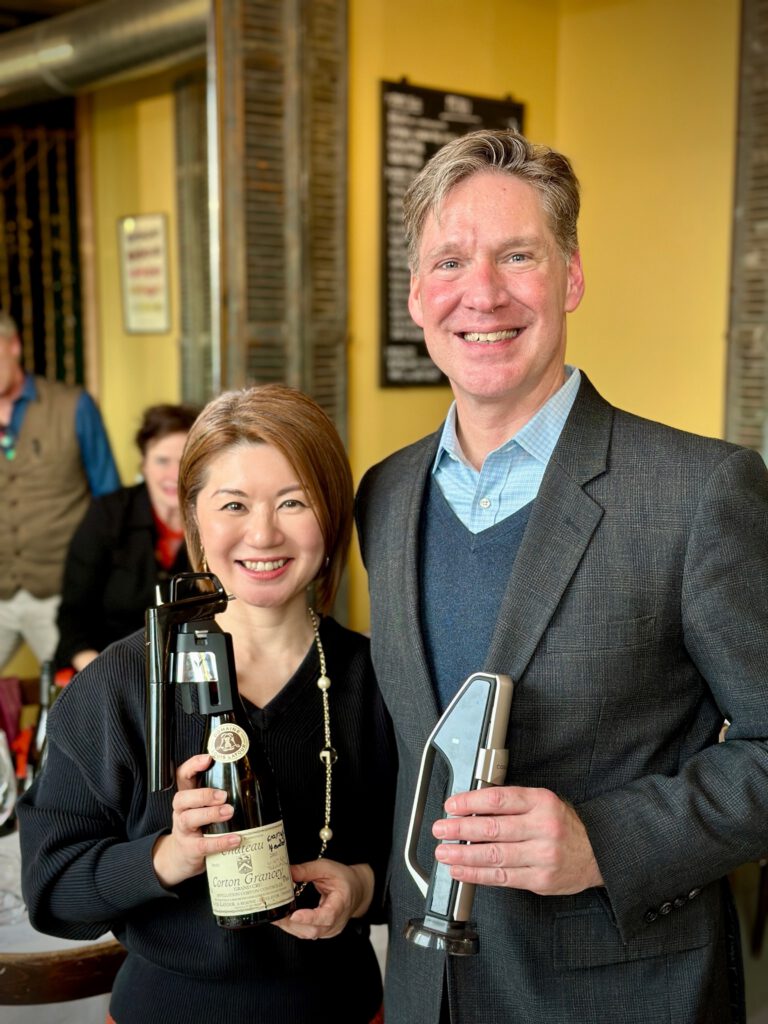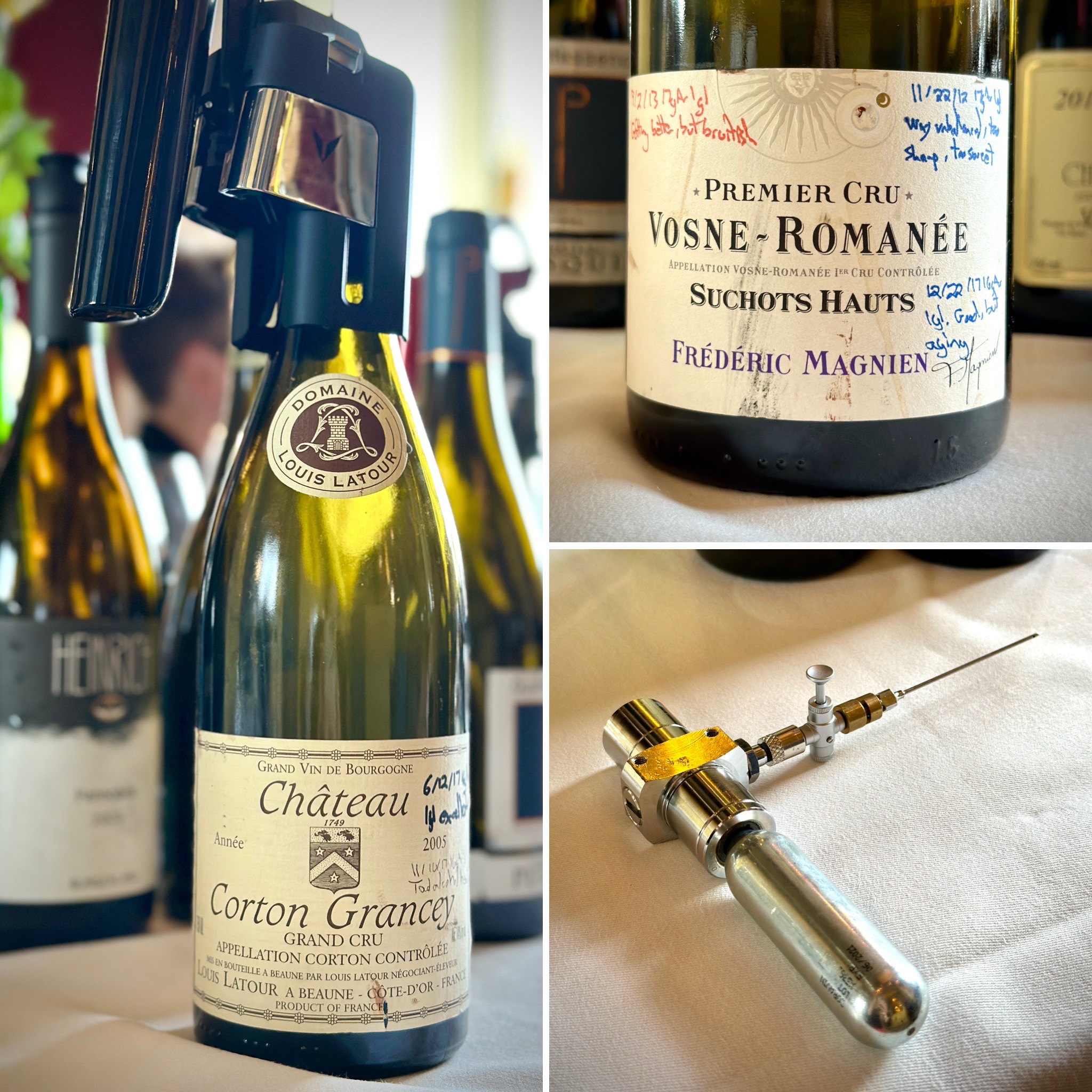Putting Coravin to the Ultimate Test.
Recently, we got invited to a special tasting organized by Coravin to experience the effect of wine preservation over time. Our own Kazumi Uejo visited the masterclass tasting hosted by Coravin’s inventor and founder, Greg Lambrecht in Amsterdam wine bar Vindict
With us, wine enthusiasts, industry folks, and experienced sommeliers gathered.
In this report, we will share some behind-the-scenes stories about the invention of Coravin, and share some considerations when it comes to using Coravin. For wine lovers unfamiliar with Coravin, we recommend reading these articles beforehand: “Coravin Three: Elevating Wine Enjoyment to New Heights” and “Coravin Sparkling – Preservation System for Sparkling Wines.“
Pre-Masterclass Musings: The Writer’s Personal Perspective
Like many other wine professionals, I am a heavy user of Coravin. Especially while studying for the WSET Diploma Level 4 exam, Coravin played an inevitable role in conducting blind testing—A few wines were chosen and poured from over 70 bottles each night. As a result, questions came up, mostly about oxidation—when and why it occurs. Honestly, I was skeptical about its wine preservation capabilities for extended periods (over three months). Still, nevertheless, I’m a big fan of the preservation system, and dare I say, Coravin is a fantastic product to enhance our wine experiences.
During this masterclass, we were confronted with eye-opening revelations during blind tastings, prompting a reassessment of my beliefs about Coravin’s preservation capabilities. I realized I had been using my Coravin incorrectly. Greg’s unwavering dedication to quality assessment, based on his earlier professional experiences, was the cornerstone of the Coravin demonstration.
Inside Coravin: Greg Lambrecht and the Untold Tales
Greg Lambrecht is not just your average inventor; he has a curious mind with an engineering background and is a captivating storyteller with a broad perspective. The fascinating twists in his career led to Coravin in some astonishing ways: from studying fusion technology at MIT to working in Japan’s Mitsubishi Heavy Industries, after which he transitioned into medical technology where he spent half of his professional life.
In 1999, faced with the frustration of wanting to enjoy wine without committing to uniform bottle sizes, Lambrecht acted, drawing on his expertise in ultrafine medical needles to invent the initial prototype of Coravin, named the ‘Wine Mosquito.’
It’s intriguing how prototype development was done, through collaboration with a factory that produces medical needles. What’s even more fascinating is that this company remains the supplier of the needle of the Coravin to this day. Likewise, the replacement cap for screw-cap bottles features a component made from a material commonly used as a medical implant for drug infusion.
As a skilled communicator, Lambrecht sought feedback from friends and medical professionals to further refine the product. After significant improvements for personal use, he ventured into the restaurant scene in the USA. Here, the demands were higher, they required a product that could be used by a broader range of people, without specialized knowledge, to avoid wasted needles or gas. Thus, Coravin evolved, to become easier, faster, and more durable in its design, and in 2013, the Coravin laid the groundwork for its current design.
Surprisingly, the second-largest market for Coravin, following the USA, is France. It’s remarkable, considering the challenge of introducing new equipment in a country deeply rooted in tradition and culture. As it turns out, those concerns were valid. During a venture with Charles Curtis MW in Burgundy, Lambrecht encountered the strictest quality standards for Coravin. For example, visiting Domaine Bonneau du Martray, he had the opportunity to access incredibly old wines, some of which were cherished relics from the owner’s mother’s era. The biggest challenge arose from dealing with ancient corks and maintaining the utmost cleanliness in using the Coravin. Failure to uphold strict hygiene standards risked the transfer of microorganisms from one bottle to another, which could compromise the wine, and it was not acceptable even in the production test. After continuous success in quality evaluation at prestigious wineries, Burgundy became the first region where many producers used Coravin.
Getting into Bordeaux was no walk in the park. Some prestigious Châteaux were hesitant to embrace innovation. Yet, Véronique Sanders, CEO of Château Haut-Bailly, became a game-changer for Coravin in the Bordeaux region. Currently, Coravin is innovating hand in hand with wineries. Case in point: the newest addition, Sparkling Coravin, was developed in collaboration with Moet & Hennessy. Dom Perignon in France and Chandon in California have also partnered on quality assessments for years.

Savoring Coravin-Aged Wines: A Journey Through Time
Beyond assessing wine quality at factories or wineries, Lambrecht continued to test on the wines accessed with Coravin at his home. With over 800 bottles accessed using Coravin since 1999, some of these bottles have been stored for over a decade. Each time he samples a wine using Coravin, he diligently records his impressions by hand on the label. Oxidation is also checked, of course. During our session, he graciously shared some selections from his collection for our blind-tasting experience.

First flight: Chablis Premier Cru 2010 Vaillons Vieilles Vignes – Caves Jean et Sébastien Dauvissat
Greg set up this blind tasting under the following conditions:
- Glass 1: This wine was accessed with Coravin for the first time on 26/9/2016 and remains corked. The wine was poured with Coravin again.
- Glass 2: This is a new bottle of the same vintage wine as Glass 1 and 3. The wine was poured with Coravin at that time and is still corked.
- Glass 3: Same bottle as Glass 1, but the wine was poured after uncorking.
Right after pouring, all three glasses presented with a closed-off impression. Glasses 1 & 2 also exhibited similar aroma profiles but slightly unfamiliar aromas were also found in Glass 1, which we suspected might be oxidative notes, but we wanted confirmation. Glass 3 showcased different aromas compared to the other two.
Fifteen minutes later, all three wines opened up, revealing remarkably similar aromas of ripe citrus and stone fruits, accompanied by distinct wet stone minerality and a hint of creaminess on the nose. Glass 2 offered a different palate impression, with a creamier mouthfeel, but all three displayed a beautifully mellow texture.
We deliberated on which category the contents of the glasses fell into but couldn’t come to a consensus. Surprisingly, our opinions continued to shift over the course of minutes. It is remarkable, given that eight years had passed since the Coravin was first used on the bottle. One interesting observation we made, and he hinted, is that heavier argon gas than air remains trapped in the glass. This gas dissipates when the glass is tilted for tasting. Therefore, the unfamiliar aromas were likely attributed to something masking the fruit notes. (Argon itself has no odor and is an inert gas that doesn’t react with other elements.)
Second flight: Ventoux Quintessence Rouge 2011 – Château Pesquie
We proceeded with another blind tasting, this time with red wine— Ventoux Quintessence Rouge 2011 from Château Pesquie.
- Glass 1 was accessed with Coravin for the first time on 24/12/2016.
- Glass 2 was another new bottle, accessed by Coravin on the day for the first time.
- Glass 3 was from the same bottle as Glass 1 but was opened conventionally.
Once more, none of us could reach the right conclusion.
Third and final flight: Château Corton Grancey Grand Cru 2005 – Louis Latour and Vosne-Romanée Premier Cru Scuhosts 2002- Fréderic Magnien.
We sampled two, even older bottles:
- Château Corton Grancey Grand Cru 2005 from Louis Latour (first accessed by Coravin on 11/11/2017)
- Vosne-Romanée Premier Cru Scuhosts 2002 from Fréderic Magnien (first accessed by Coravin on 11/12/2012)
Also here, to our surprise, we found ourselves simply savoring the aged, exquisite Burgundy wines without detecting any signs of oxidation.

Unlocking Longevity: The ‘Clean, Clear, Cellar’ Approach to Wine Preservation
What about our experience with oxidation in personal use?
Potential speculations for the cause included the frequency of Coravin use (which could reduce cork elasticity, allowing small amounts of air to seep into the bottle) or the volume of wine remaining in the bottle (where increased headspace might increase the likelihood of air contact). However, Lambrecht dismissed both notions.
He explained that corks, including DIAM, can maintain their elasticity almost indefinitely as long as they are healthy. Medical needles are thin enough to create minuscule holes in the cork, which can return to their original shape. The likelihood of air entering the bottle is not from the hole created by the medical needle, but from the space the cork creates around it. The cork deterioration can be identified by gently pressing the cork from the top with your finger and ensuring it moves. It’s important to note that synthetic corks are unsuitable for Coravin use, as they lack the elasticity to return to their original shape, even with the small medical needle.
He further explained that a highly likely cause was a small amount of air remaining in the Coravin itself, which seeped into the bottle with each use. This minute introduction of air could gradually contribute to oxidation, becoming noticeable over time. However, this can be prevented by purging the air before each use. He recommended quickly pressing the trigger after inserting the needle into the cork as part of the pre-use preparation. This is it! I have never purged air before using it.
Lambrecht stressed that the key to preserving wine for years lies in the mantra of “Clean, Clear, Cellar.” This involves keeping the Coravin clean by sanitizing it with hot water every night, clearing any remaining air in the Coravin before use by promptly triggering the button, and storing the bottles appropriately in a cellar by laying them on their side to ensure the wine’s longevity.

Mastering Preservation: Coravin’s Triumph Over Time and Skepticism
Even skeptical heavy users may have their doubts, but the masterclass showed that Coravin can preserve wine for extended periods, including wines over a decade old. As users, our task is to put Coravin to the test and use the right techniques to enhance our experience, especially for long-term preservation.
We want to express our sincere gratitude to Greg Lambrecht and team Coravin. The invention has truly revolutionized our understanding and appreciation of wine in such an extraordinary way.
This article is written by our own Kazumi Uejo for Dutch Wine Apprentice. We would like to thank Coravin, in particular Greg, for the opportunity to put their wine preservation system to the test.

